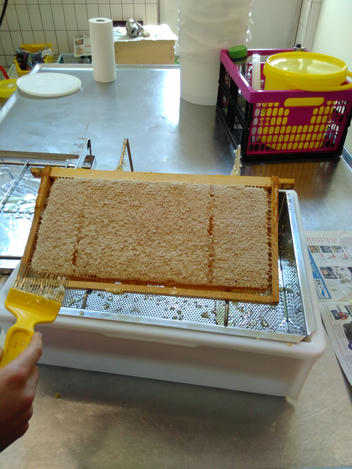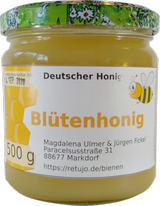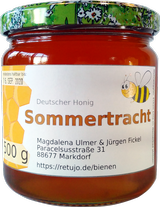Honey
Honey is by far the most important product we get from our bees.
Very similar to wine, honey it is a fingerprint of the local nature over a certain space of time. Each year produces its very particular honey that fluctuates in flavour, constituation and also the amount that is available.
Table of contents
Varieties ⬡
Usually we extract honey two times a year: blossom honey at the end of May and at the beginning of July the summer flow of honey.
Wild honey is a rarity which is available only every couple of years.
Blossom honey ⬡
Blossom honey originates from the nectar of all plants which bloom during spring time. In the surroundings of our bees these are for example apples, pears, cherries, quinces and plums – furthermore, dandelions and other flowers. In some years also rapeseed could be found.
Blossom honeys in our region tend to crystallise fast because of the naturally high share of glucose. Therefore we stir the honey to get a stable creamy consistency.
Summer honey ⬡
Nectar, the bees collect from the first harvest until the beginning of July, becomes summer honey.
Summer honey can partly originate from honeydew. Those kind of honey hence is usually darker in colour and has a richer flavour. Because of a different composition of natural sugars, somer honey crystallises way more slowly than blossom honey.
Honey whose main source was honeydew is called wild honey. It has a richer flavour than summer honey and remains fluid even longer. However, wild honey is available only every couple of years which makes it a very precious subject for aficionados.


